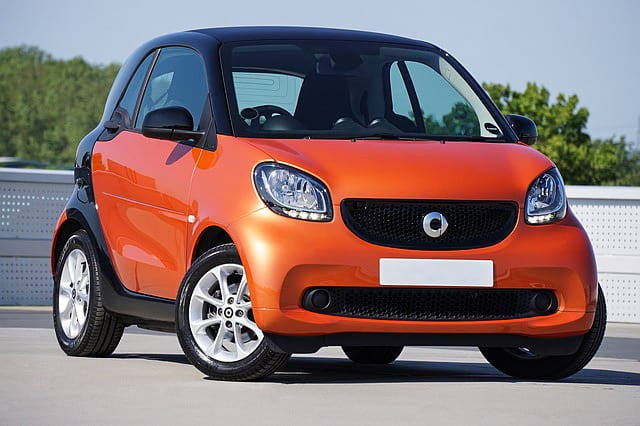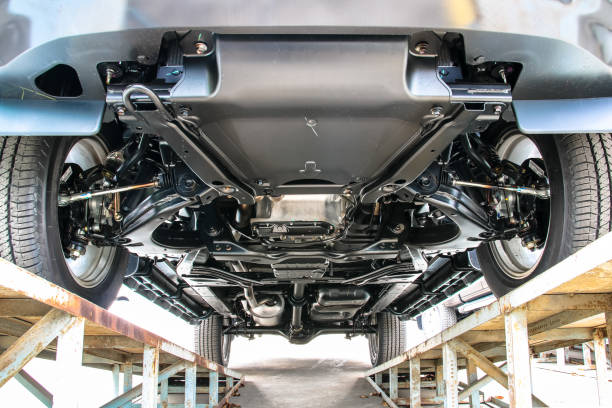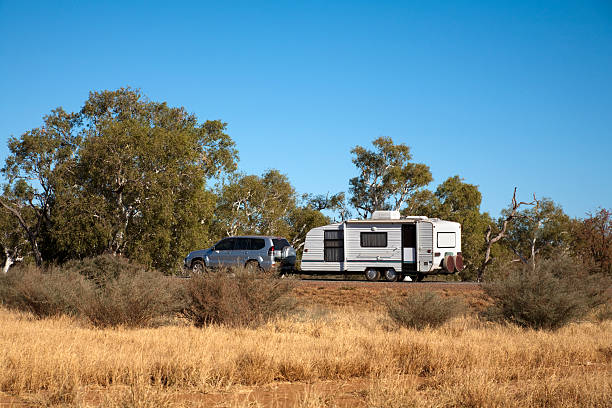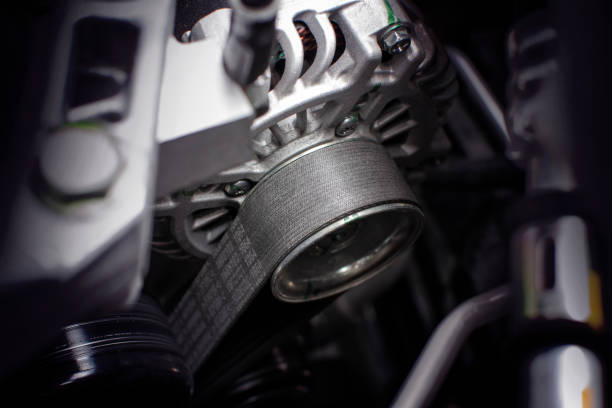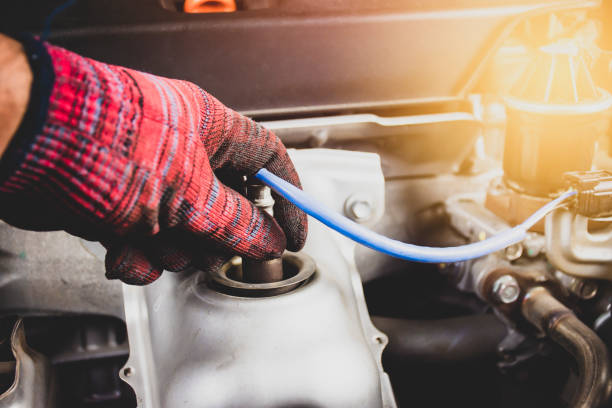What is the average smart car weight?
- 1550 pounds is the average weight between the first generation and third-generation models of the Smart USA smart car family.
- 1850 pounds is where the latest generations weighs in, depending on options and soft top conversions.
Smart Car Overview
Smart cars, by general definition, are any vehicles that use advanced electronics. Much like our cell phones have become “smart phones,” the broad term simply means a more efficient model. One of the main factors advancing efficiency is the smart car weight.
To zero in on this smart car weight discussion, we will focus on the carmaker by the same name, “Smart USA.” Smart USA started as a joint venture between Swiss watchmaker Swatch and the well-known car maker Mercedes-Benz in the early 1990s. Swatch Mercedes Art became SMART, and the carmaker was born.
Why is Smart Car Weight Important?

The primary purpose of a car is for transportation. The primary need for transportation is to help people get to their jobs. Jobs serve the purpose of helping us earn a living so that we can pay bills and hopefully enjoy activities outside of work.
But this transportation comes with a cost. That cost is an expense that comes out of the money we earn on the job. So, choosing a smart car that requires minimal expense allows the money made from working to go farther. The main cost of owning a car is the gasoline used to power the car. The main factor influencing how much gas a car uses is the smart car weight in pounds.
The heavier a car weighs, the more energy or gas it takes to move the car. The smart car weight in pounds is approximately 1,550 lbs. Another term used for car weight is “curb weight.” The smart car curb weight is still 1,550 pounds as this indicator refers to an empty car, or how much it weighs sitting by the curb.
Smart Car Weight Distribution

A commonly used smart car weight distribution is the 50/50 model. This means the weight is evenly distributed between the front and back of the car. Cars with even weight distribution tend to be faster. Smart car weight distribution also keeps wear and tear on parts evenly shared. It is not always possible to achieve exact 50/50 smart car weight distribution, and some models settle with 45/55 with similar benefits.
Let’s look at the wheel brakes, for example.
If a car had more weight over the front wheels, the front brakes are going to work harder and wear down quicker than the brakes on the back of the car. The front brakes will need to be replaced long before the rear brakes. Once repaired, they will be working better than the rear brakes because they are brand new.
This causes an offset when applying the brakes, which leads to uneven wear between the front and back. A balanced smart car weight distribution means the brakes will wear evenly and be replaced at approximately the same time. This prevents uneven wear and tear on the brakes.
Smart Car Weight for Vehicle Stability
If you have seen a car show and watched a driver pull the front wheels off the ground during takeoff, it is universally known as a “wheelie.” Getting a car (or motorcycle) to pull the front wheels off the ground requires most of the weight to be centered over the back wheels. The lack of weight on the front plus the forward motion caused by pushing on the gas pedal is what causes a wheelie to occur.
On the contrary, if you have ever been going fast on a bicycle and used the front brakes only to stop, you may have experienced being flipped over the front handlebars. This is due to forward motion and too much weight over the front wheel. Both situations of imbalanced weight are bad for the stability and safety of the vehicle.
The stability of the smart car weight is a significant contributor to safety. Without the even distribution of the smart car weight, the handling and control of the vehicle could present a dangerous situation.
Smart Car Weight Includes Safety Features
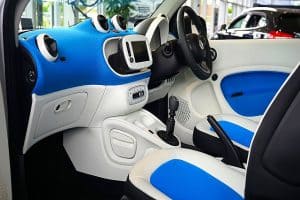
If you are in a car accident, there is an old saying, “Bigger is safer.” But the safety features included in the smart car help keep occupants safe without adding a lot to the smart car weight. Remember, lighter weight means more gas savings.
There is a total of four airbags embedded for protection. Built-in protective headrests add very little to the smart car weight but prevent whiplash injuries during collisions from the rear. Specially designed bucket seats cradle the occupant while offering state-of-the-art seat belt protection.
The interior of the car is encompassed with a Tridion steel safety shell, which offers protection during crashes at 70 mph. Protection is also strengthened by the crumple zone at the front of the car. This design is allowed due to the engine being in the back of the car.
So, don’t immediately assume the light smart car weight means these vehicles are unsafe. On the contrary, they have passed the same safety crash standards that all other vehicles must pass to be deemed road ready.
Breakdown of the Smart Car Weight
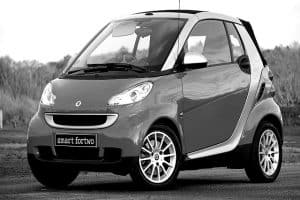
The Smart ForTwo is the current generation of Smart cars on the market. The Smart ForTwo weight is 1,940 pounds with a wheelbase length of only 74 inches. Making up the bulk of the smart car weight is the M281 I3 engine and the manual or single-speed transmission.
Accessory weight comes from interior parts like the seats, dashboard and instrument clusters, and optional soft top material. Safety features are also in the calculation and include additional safety cell reinforcements in the roof. It also includes torsional bulkheads beneath the car, reinforcements of the A-pillar, and a crossbar or basket handle behind the passenger seats.
Conclusion
Smart car weight is a crucial factor in the ability to get great gas mileage and save your hard earned money when using transportation. The smart car weight distribution plays a big role in the handling and safety of the vehicle. If you are looking for a car that doesn’t cost very much and can get you safely from Point A to Point B, the smart car is your best option.
FAQs – Frequently Asked Questions on Weight
Read the article linked in the question to find out
Q: What are the heaviest parts of a car?
When considering the smart car weight, the heaviest parts of the car are the engine and transmission. Additional interior and exterior components like seats and wheels are individually much lighter.
Q: Which car is the heaviest ever made?
Currently, in production, the Rolls-Royce Phantom is the heaviest car on the market. It weighs over three tons at 6,052 pounds. This is three times heavier than the current smart car weight. It is six times heavier than the lightest current production car, the Ariel Atom. It weighs in at a mere 1,005 pounds.
Q: Given the lightweight, how fast can a smart car go?
Automaker Smart USA claims the 61-hp engine can accelerate from zero to 60 mph in approximately 15 seconds. A safety limiter tops the highest speed to 84 mph. Given the smart car weight distribution, the car remains stable and easy to handle.
Q: Are lightweight smart cars safe?
When the Insurance Institute for Highway Safety (IIHS) tested the Smart Cars made by Smart USA, they earned the highest markings of “A” grade. This Five Star rating is owed to the smart car weight distributed evenly within the steel race car style frame and four embedded lightweight but high-tech front and side airbags.
Q: Are lightweight smart cars expensive to insure?
Comparably, the insurance rates for electric vehicles can be up to 21% higher than to insure cars that run on gasoline. In 2015, Forbes ranked the Smart ForTwo Pure Coupe as one of the Top 10 cheapest cars to insure. On average, be prepared to pay around $3,800 for automobile insurance over five years if you own a smart car.
Q: Can you tow a lightweight smart car?
The reduced size and light smart car weight make them ideal for towing behind an RV. There is less wind drag due to the smaller dimensions. Technically, gas-powered smart cars are designed to be “flat towed.” But if you end up with an electric smart car, be warned, they are not intended to be towed behind a vehicle. Electric smart cars are designed to be towed on a flatbed trailer.
Q: What is the towing capacity of a smart car?
Towing capacity seems to be around 1,600 pounds across the entire Smart Car lineup. Regardless of the smart car weight distribution, always take great care in how you tow and load a trailer.
Q: How far can you drive on one tank of gas in a smart car?
Smart car weight comes in easily at 700 pounds or less than the average weight of most cars. This is one of the factors that allows smart cars to drive up to 350 miles on one tank of gas. The tank holds 8.7 gallons of gasoline, which includes a reserve tank that holds 1.3 gallons, and the stated mpg is 40.
Fun Facts:
Smart cars are short enough that they can be parked perpendicular in a spot designated for parallel parking.
If you liked this article make sure to check out: How Much Does Maaco Charge to Paint a Car and How Long Does it Take to Charge a Tesla

